| Umělec magazine 1998/8 >> Interview with Lívia Páldi, co-director of the Institute of Contemporary Art-Dunaújváros | List of all editions. | ||||||||||||
|
|||||||||||||
Interview with Lívia Páldi, co-director of the Institute of Contemporary Art-DunaújvárosUmělec magazine 1998/801.08.1998 Vladan Šír | q&a | en cs |
|||||||||||||
|
The mission statement of the Institute of Contemporary Art - Dunaújváros says that you wish to initiate cooperation among countries of the Central and East European region. Why did you decide to do that, step beyond limitations of one country?
The wider perspective is crucial in the context of our work. We both (co-directors Lívia Páldi and János Szoboszlai) worked for the Soros Center for Contemporary Art - Budapest before and we were not satisfied with the way the network was operating. We had many discussions on what should be done differently in order to be able to operate it efficiently. And then came Dunaújváros as a possibility to experiment. But going back to your question: the impact and development of networking technologies and working strategies cannot be separated from local specifics, nor from the social and political framework at large. To be able to intervene into the cultural sphere and make this intervention effective, we have to propose, discuss, debate and exchange ideas, strategies etc., internationally or say globally. And since media culture, new technologies now play a very important role we are also constantly challenged by the new forms of networking. But Dunaújváros is not Budapest, it’s not a center of happenings. Does that represent a problem for you? The last year clearly shows that in contrast to the provincial milieu and its art we created an art center - a place which is able to absorb, process significantly different influences including the ones coming from the environment we are working in. Of course there is a wider range of activities we undertake and also wider range of forms of these activities we practice, mostly because we are working in this environment and under these special conditions. This practically means a diversity of educational and social programs for special target groups - for elementary and high schools as well as for teachers. We have started to form a working group for teachers to help them with integration of contemporary visual arts and culture into their practice. We have also created the base for opening a ‘cybercafé‘ (with two computers) which would help different generations get access to and also meet and make use of the challenges of new media and information practices. A disadvantage, but I prefer not to use this word - would be the limited capacity and understanding for the social and cultural dimensions of our activity which also means that some already initiated projects have to be realized in Budapest. We do not really have problems with the number of visitors. Since we open 2 or 3 exhibitions at one time and we run a free bus service to bring people from Budapest we always meet very different audiences. We also combine these openings with some other events, DJs, clubbing etc., to create a real ‘audience-friendly‘ and relaxed atmosphere. After one year we can count on a much larger group of local people visiting the Institute regularly. We simply have to be more ambitious, energetic and creative. For me personally the commuting, as a new experience in my life, brings up many ideas for improvement. So you don’t actually live in Dunaújváros? No, our work and presence is more intense and concentrated if we do not live there and also there is a lot to do in Budapest. What was the response you got when you approached artists, curators in Central European countries to create the network? There was not a single negative answer or comment but we made a careful selection before we approached people. We did not want to start with too many participants so we invited 7 people: Miško Šuvaković (Yugoslavia), Aneta Sylak (Poland), Judit Angel (Romania), Darko Simičić (Chroatia), Leonida Kovać (Croatia), Michal Koleček (Czech Republic) who could not come and Inke Arns (Germany), the only ‚western‘ participant. With Miško’s wife Dubravka Durić it became 8 which was excellent for an intense 3-day discussion and brainstorming. After introducing the different environments and contexts we have been working in we tackled many important issues which are relevant in and out of the region, for example the situation of art and its institutions in the post-socialist societies in Central and Eastern Europe, the theoretical and educational backgrounds we have, the structure of financial support and fundraising, the existing and inadequate theoretical apparatuses, the methods of effective international cooperation and a lot more. We decided to meet annually and work on a special project every year. Our first publication is due in spring and we will hopefully have our next meeting in April with new members. This meeting, Who by Fire #1, was held in December, 1997 and went along with the first exhibition of Central European artists - 6 artists from Croatia curated by János and Darko Šimičić. From what you said, the span of activities is huge. How is the center organized? We started working more than two years ago. In 1996 the Public Fund for Modern Art which operates ICA-D was provided with the support from the Municipality to finish the extensions of the existing gallery. They were looking for professionals to construct and run the new medium-size non profit institution. I was asked but I preferred working in a team therefore I asked János to join. We applied and started working as co-directors. ICA-D was opened in September,1997. We have initiated and realized many changes in the structure and now we are a team of 10 people. Five of them are the guards (mostly young men doing their civil service), there is a cleaning lady. Gyula Várnai a prominent artist is in charge of the collections and Nora Deák is dealing with the financial matters. The planning of the programs and projects are entirely our responsibility so is correspondence, PR, fundraising and the efficient running of the office as an info place as well. All the different projects have their managers, mostly me and János, who curate, co-curate and organize but everybody is participating in all of the projects in some ways. In the last year we had 21 exhibitions and more that 15 events such as discussions, lectures, concerts etc. There will be some changes starting 1999. We plan to do less projects and keep them open longer. Do you find it difficult that you often compromise your exhibition plan because of the place where you are located? I would not call it a compromise. When we put together our proposal we had already integrated this fact and its consequences as a factor influencing our working methods and its perspectives. Dunaújváros has a special historical, political and social climate enhancing site and city specific projects and it also challenges us to find the matching international places, artists and institutions for cooperation and contact. How do you find financing? The operation costs such as salaries, insurance, bills, and a very small sum for running the office are covered by the Municipality. Otherwise we have to find supporters and sponsors because we do not have any money for the projects. That is why the network is so important because it is easier to act as a group. We basically apply for money from the National Cultural Fund, the Soros Foundation and in the last three years from the Pro Helvetia. Of course we work together with the Goethe Institute and the Austrian Cultural Institute etc. Occasionally, smaller and mostly local companies help us with services. We have developed a lot of important contacts and started cooperation with local TV, local Internet provider, a computer shop and also with the computer and video lab of the Technical University in Dunaújváros. They provide technology and we provide the content.
01.08.1998
Recommended articles
|
|||||||||||||
|
04.02.2020 10:17
Letošní 50. ročník Art Basel přilákal celkem 93 000 návštěvníků a sběratelů z 80 zemí světa. 290 prémiových galerií představilo umělecká díla od počátku 20. století až po současnost. Hlavní sektor přehlídky, tradičně v prvním patře výstavního prostoru, představil 232 předních galerií z celého světa nabízející umění nejvyšší kvality. Veletrh ukázal vzestupný trend prodeje prostřednictvím galerií jak soukromým sbírkám, tak i institucím. Kromě hlavního veletrhu stály za návštěvu i ty přidružené: Volta, Liste a Photo Basel, k tomu doprovodné programy a výstavy v místních institucích, které kvalitou daleko přesahují hranice města tj. Kunsthalle Basel, Kunstmuseum, Tinguely muzeum nebo Fondation Beyeler.
|



















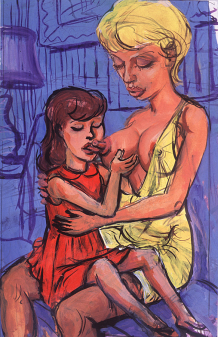




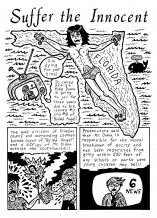
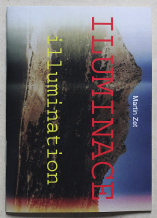
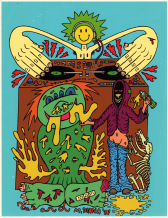
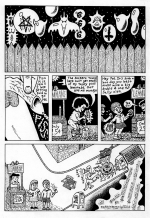


 New book by I.M.Jirous in English at our online bookshop.
New book by I.M.Jirous in English at our online bookshop.
Comments
There are currently no comments.Add new comment